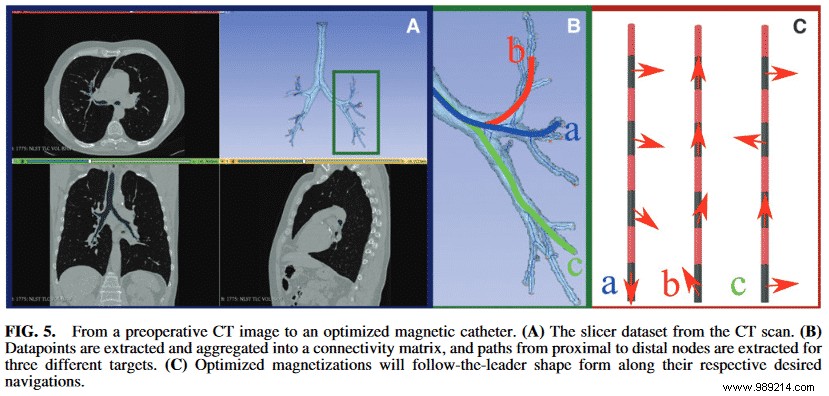British scientists recently unveiled a soft robot capable of moving through the lungs. Its objective is to reach their smallest ramifications in order to detect the presence of cancer. For the project leaders, this is a major step forward.
Bronchoscopy (or bronchial endoscopy) is an examination allowing direct observation of the larynx and the respiratory tract. However, in a study published in the journal Soft Robotocs, researchers from the University of Leeds (United Kingdom) indicate that they have improved this type of examination . They have indeed designed a soft robot capable of moving in the lungs of patients. According to the authors of the study, the small robot could significantly improve the diagnosis of lung cancer. However, this is the second most common cancer in the world in men and the third in women. It must be said that the robot in question is able to move in all of the structures conveying the inspired and expired air , in other words the bronchial tree down to its smallest ramifications.
Currently, doctors use a viewing probe called a bronchoscope. The examination is done under local anesthesia and can detect the presence of lesions that may indicate the presence of cancer. The device also makes it possible to take segments of these lesions for analysis. Specifically, doctors insert a flexible tube through the patient's mouth or nose, the diameter of which is 3.5 to 4 mm , before reaching the bronchi. Only, there you go, the size of the device does not allow you to go further than the upper levels of the bronchi. In order to access the smaller branches, it is therefore necessary to pass a thinner tube (catheter) through the bronchoscope. However, this manipulation is rather difficult to perform.
The British scientists therefore designed their robot to respond to the problem induced by the bronchoscope/catheter couple . The soft robot here takes on the appearance of an articulated tube. The challenge was particularly difficult for the researchers, as the device had to be flexible, small and able to access all areas of the bronchial tree. Also, it was essential to develop an autonomous machine , therefore able to do without the action of doctors.

Two interconnected cylindrical segments make up the robot, those- each measuring 2mm in diameter and 80mm in length . The segments sport a soft elastomeric material containing small magnetic particles. Thus, these same segments can move independently with the help of an external magnetic field, in other words, magnets mounted on robotic arms outside the patient's body. In this way, the robot finds its way and changes direction without difficulty.
Furthermore, the path of the robot is defined by means of planning based on preoperative analyses of the patient's lungs. Before any manipulation, the doctors must program this planning in the system. However, it will certainly take some time before this innovation becomes the subject of democratization. Indeed, if the first tests were carried out successfully, these were only carried out on a replica of bronchial tree .